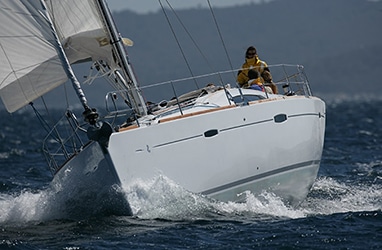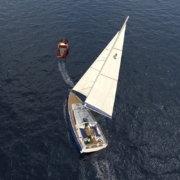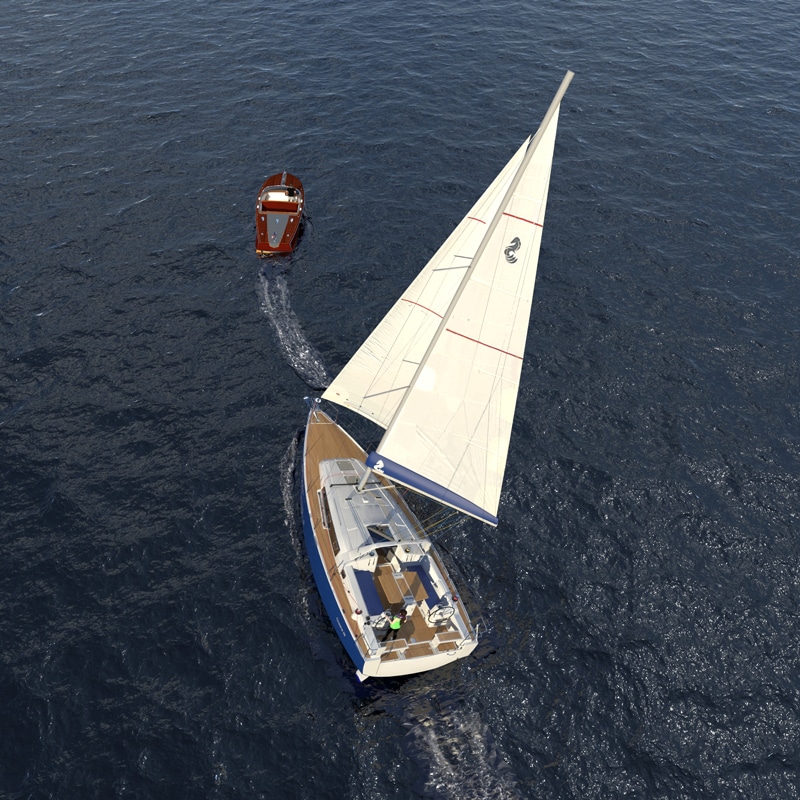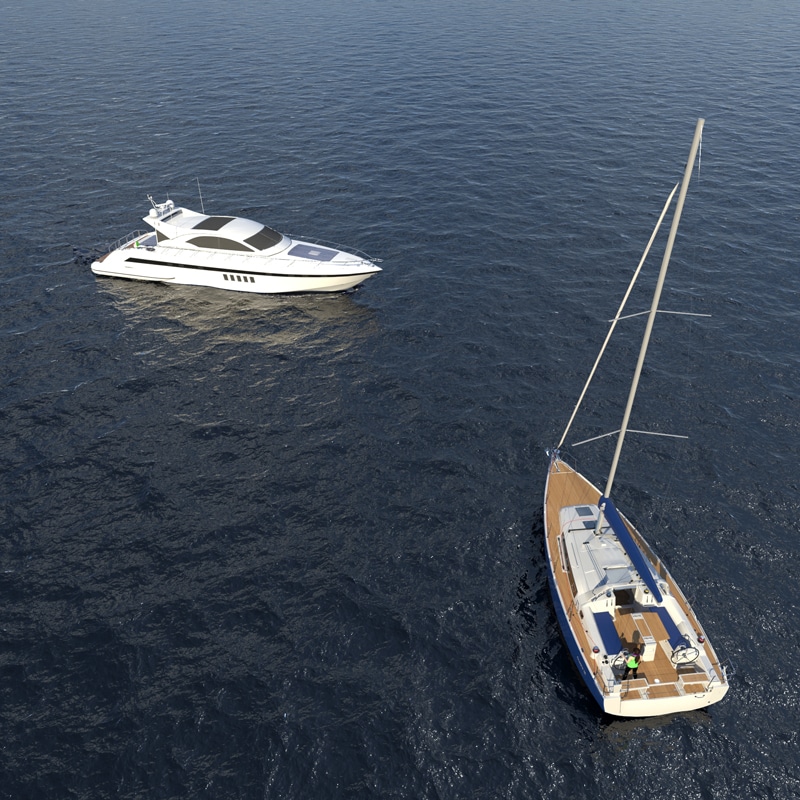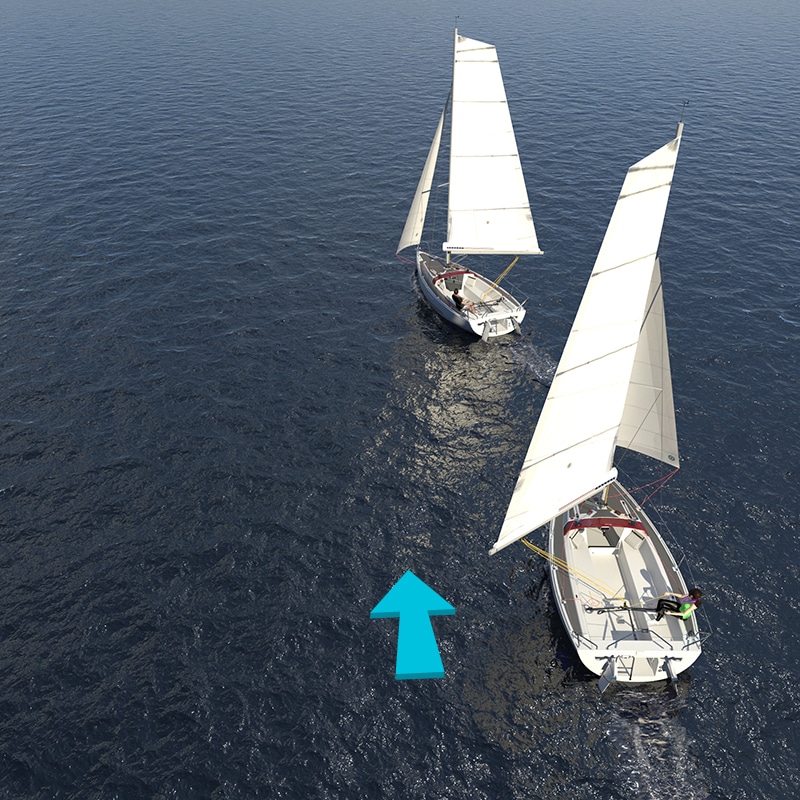Overtaking Vessels
Here we quote the rules exactly because they are incredibly clear. Note that a sailing vessel is a part of “any vessel”. i.e. if you are a sailing vessel overtaking any other vessel according to (a) you must keep clear.
The Rule
(a) Notwithstanding anything contained in the Rules, any vessel overtaking any other shall keep out of the way of the vessel being overtaken.
(b) A vessel shall be deemed to be overtaking when coming up with another vessel from a direction more than 22.5 degrees abaft her beam
(c) When a vessel is in any doubt as to whether she is overtaking another, she shall assume that this is the case and act accordingly.
(d) Any subsequent alteration of the bearing between the two vessels shall not make the overtaking vessel a crossing vessel within the meaning of these Rules or relieve her of the duty of keeping clear of the overtaken vessel until she is finally past and clear.
Discussion
Wow, look at (d). This means that even while you are overtaking and keeping clear if the other vessel changes course you must still keep clear. But there is nothing in (d) that says if you are being overtaken you have the right to change course. If you are being overtaken you are obligated to continue to Stand-On to not make course changes.
Do you get the overall feeling here? There is a common theme. The rules are written so that everyone has the responsibility to avoid collision. Even if you feel you are in the right – you can not instigate a collision to prove your point.
Some Examples
Above: The sailboat is overtaking a powerboat. Any vessel overtaking another must Give Way, therefore the sailboat must Give Way. This is also the case if the powerboat is lying adrift in this position.
However, if the powerboat was adrift in the position in the image below, the powerboat must Give-Way. The reason for this is that adrift is actually considered as “underway” even with engines off. Oftentimes in lakes or sheltered bays, we will encounter powerboats that are adrift as sunbathing, etc. The rules are clear – adrift is underway and appropriate Giving Way must be done. However, the rules are also clear in that you must avoid collision. Therefore, if you determine that the skipper of a powerboat that is adrift is not getting up and shifting out of your way then you must avoid the adrift powerboat AND you must do so in order not to create a close-quarters situation. In any case, this is one of those situations where a little courtesy should also be applied. The choice now becomes, which way should you go, windward or leeward of the vessel? Going windward in a close-hauled sail set could be dangerous because your vessel always has a certain amount of sideslip and you just might not make it – or the wind could change, causing you not to be able to make as tight of a heading as you estimated. Going in front of the boat also has its concerns, because if the captain suddenly turned on engines in a panic to get out of your way he might steer right into you. In this situation, if the boat were not taking evasive maneuvers, we’d recommend loudly announcing your intentions preferably with a whistle or horn, bearing away from the wind and passing well clear to the lee (downwind) of the vessel.
Above: the adrift powerboat must Give Way to the sailboat – even if the engines are off. However, as you know, the sailboat has every responsibility not to cause a collision – even if it is the stand-on vessel. The sailboat would be prudent (and is required) to take action early to ensure it misses the powerboat.
Above: This is an interesting one. The trailing sailboat on is on starboard and the leading sailboat is on port. Which do you think must Give Way? Well, for a collision to exist, the rear vessel must be overtaking the leader. The overtaking vessel must Give Way even though she is on starboard. In this case starboard Gives-Way to port. Don’t get confused, just remember that an overtaking boat Gives-Way to the other. This is a pretty obvious logical rule and as you’ll see later – being Overtaken is at the top of the pecking order of Stand-On.

